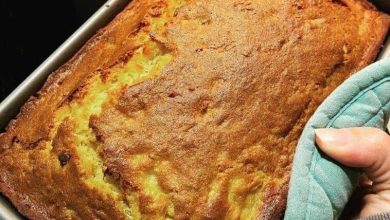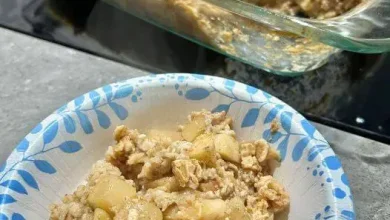How to Cook Scrambled Eggs Perfectly Every Time!!!

Perfecting scrambled eggs is an art form, and with the right technique, you can achieve that dreamy, fluffy texture every time. This method focuses on a gentle, low-and-slow approach that yields consistently delicious results.
ADVERTISEMENT
Why You’ll Love This Method
There’s so much to adore about perfectly cooked scrambled eggs. Here’s why this recipe is a must-try:
ADVERTISEMENT
- Creamy and Fluffy: Achieve velvety-smooth eggs with no dry or rubbery texture.
- Customizable: Add cheese, herbs, veggies, or spices to suit your taste.
- Quick and Easy: Ready in under 10 minutes—perfect for busy mornings or lazy weekends.
- Kid-Friendly: A comforting dish that even picky eaters will love.
- Versatile: Serve them on their own, in sandwiches, wraps, or alongside other breakfast favorites.
Ingredients:
The secret to perfect scrambled eggs lies in using simple, high-quality ingredients. Here’s what you’ll need:
ADVERTISEMENT
For Basic Scrambled Eggs:
- 4 large eggs (fresh eggs make a difference!)
- Salt and pepper (to taste)
- 2 tablespoons unsalted butter (or olive oil for a lighter option)
- 2–3 tablespoons milk or cream (optional, for extra creaminess)
Optional Add-Ins:
- Shredded cheese (cheddar, mozzarella, or feta work well)
- Fresh herbs (chives, parsley, or dill for brightness)
- Diced vegetables (spinach, tomatoes, mushrooms, or bell peppers)
- Cooked meats (bacon, ham, or sausage for heartiness)
Step-by-Step Instructions
Ready to whip up the creamiest, fluffiest scrambled eggs? Follow these easy steps:
- Step 1: Crack and Whisk the Eggs Crack the eggs into a bowl. Add a pinch of salt and pepper, then whisk thoroughly with a fork or whisk until the yolks and whites are fully combined and the mixture is uniform. For extra creaminess, stir in 2–3 tablespoons of milk or cream. This step is optional but highly recommended for velvety results.
- Step 2: Heat the Pan Place a nonstick skillet over low to medium-low heat. This is crucial; avoid high heat, as it can cause the eggs to cook too quickly and become dry or rubbery. Add the 2 tablespoons of unsalted butter (or olive oil) to the pan and let it melt slowly, coating the bottom evenly. The butter should foam slightly but not brown.
- Step 3: Cook the Eggs Low and Slow Pour the egg mixture into the skillet. Let it sit undisturbed for a few seconds until the edges just begin to set. Using a flat-edged heat-resistant spatula, gently stir the eggs in slow, sweeping motions, pushing them from the edges toward the center. This action creates soft, fluffy curds. Continue stirring slowly and consistently, allowing the uncooked portions to flow to the bottom of the pan and cook.
- Step 4: Remove Before Fully Set This is the key to perfectly creamy scrambled eggs: take the pan off the heat while the eggs are still slightly runny and glossy. They will continue to cook from the residual heat of the pan and the eggs themselves. Overcooking is the #1 culprit of dry, rubbery scrambled eggs! Stir the eggs one final time in the pan to incorporate any remaining liquid and achieve an even consistency.
- Step 5: Add Finishing Touches If desired, fold in any optional add-ins such as shredded cheese or fresh herbs for added flavor and texture. Taste the scrambled eggs and adjust seasoning with more salt, pepper, or a splash of hot sauce if you like a little heat.
- Step 6: Serve Immediately Transfer the scrambled eggs to plates or bowls right away to prevent further cooking and maintain their perfect texture. Serve immediately with toast, bagels, avocado, or your favorite breakfast sides. Enjoy the creamy, dreamy goodness!




